Don’t Look Now
“Don’t look now” is a demand to defer—and an apt characterization of the mood of the past year. Danie Cansino, Jiyoon Kim, Hings Lim, Jose Guadalupe Sanchez III, Diane Williams, and Rachel Zaretsky—the USC Roski MFA class of 2021—have spent the past year making work in a suspended state, in the face of isolation and slow-motion tragedy, wherein time no longer seemed linear.
Temporal glitching characterizes Nicolas Roeg’s 1973 film, Don’t Look Now, as early as its first sequence, in which a then-inexplicable red mirage spills across a piece of slide film. Blood, paint, chemical; it’s unclear exactly what the substance is, but it is clear that it is foreboding insofar as it immediately disrupts the logic of time. Slide film should record the past, but this particular image, of a church in Venice, Italy, is more refraction than reflection.
The works included in Don’t Look Now also function as prisms of a sort: reflections, windows, ghostly presences, premonitions, and portals pervade. Installed and documented at Human Resources in April, for an audience that would only view it later on screens, the work is undeniably touched by temporal confusion. Through mirrored narratives, Don’t Look Now doubles as a retort to and record of limitations imposed upon these six artists, who all found ways to deepen their practices in spite of the demand to defer.
Organized by Hugo Cervantes, Kate Rouhandeh, and Rachel Zaretsky.
Photos: Jackie Castillo




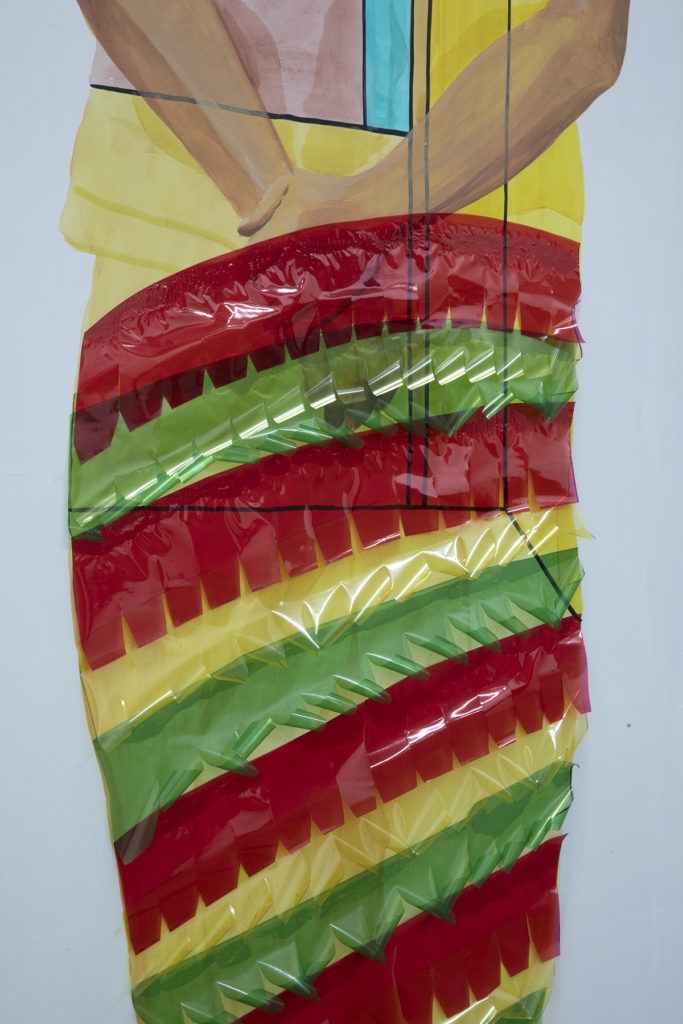
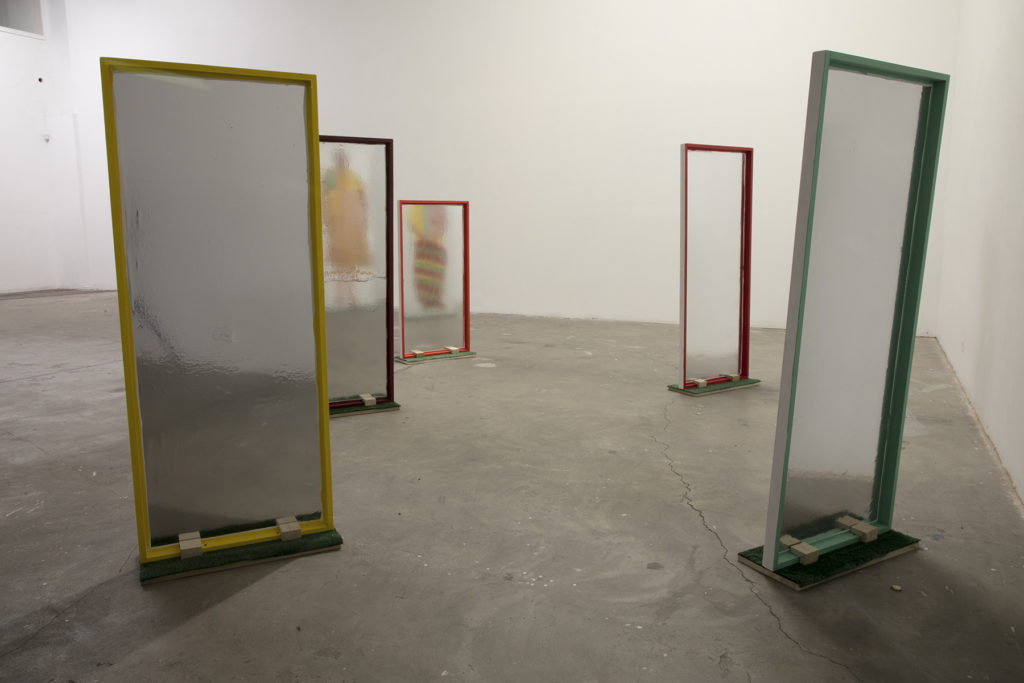










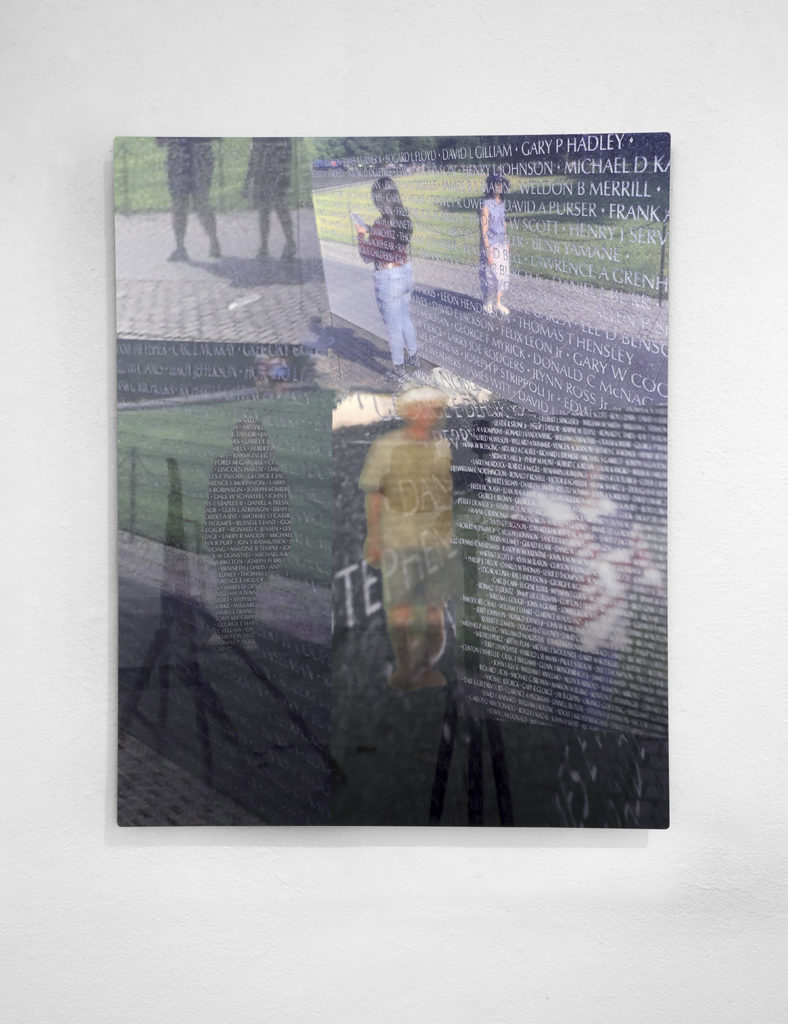


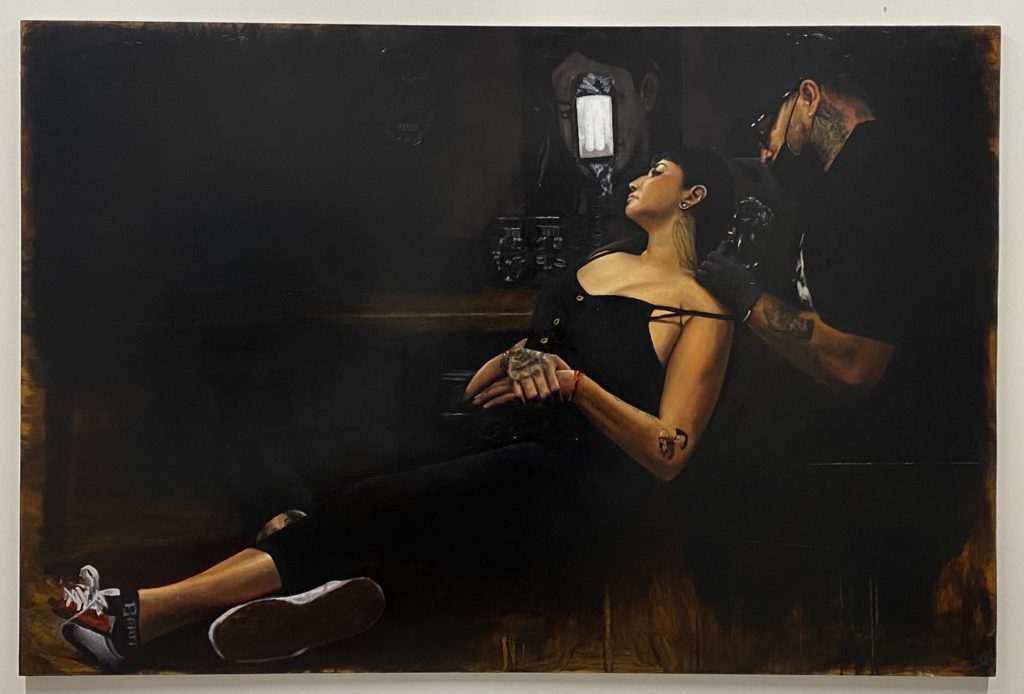


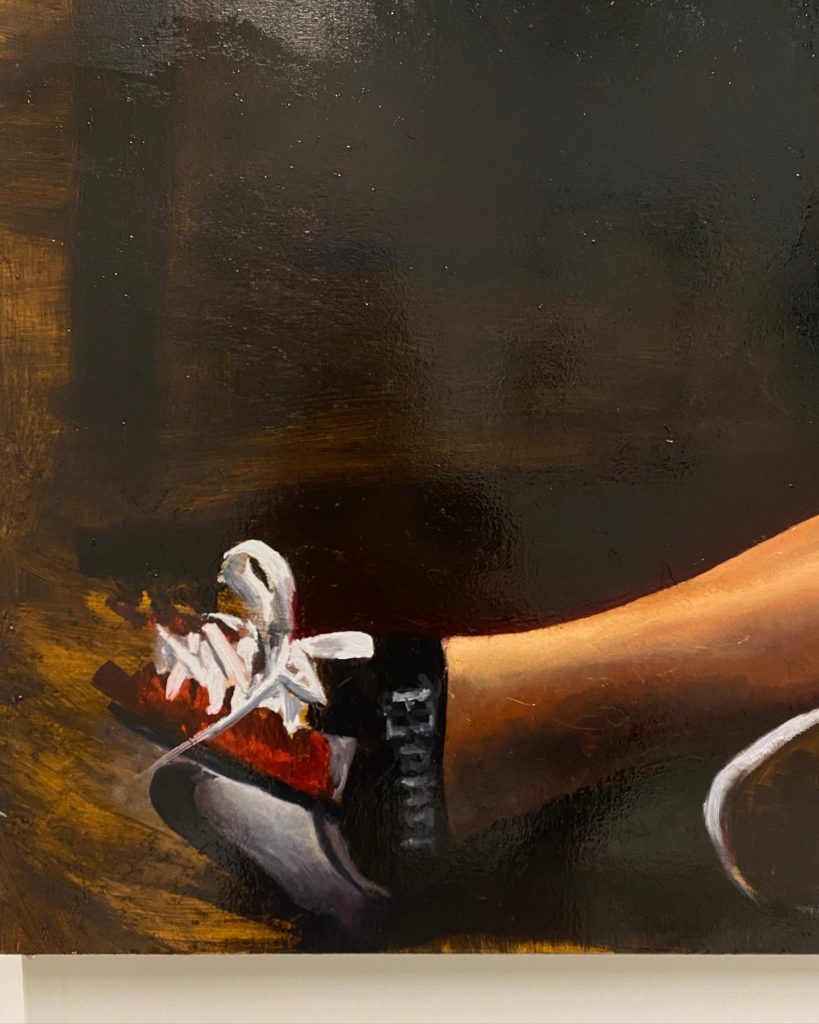
Danie Cansino is an interdisciplinary artist and educator living and working in Los Angeles. A resident artist at Mi Familia Tattoo Studio, Cansino specializes in color, and Chicanx style black and grey realism. In examining her own cultural history, and her experience around tattooed people, Cansino has become interested in the ways in which colonization has affected the practice of tattooing, in particular, tattooing in the United States. Through narrative painting, Cansino explores the notion that clients, peers, and her personal mentors all have stories to tell—showing the impact a tattoo can have on lifestyle, family, education, employment, and careers. Cansino shares these stories and shines light on lineage, tradition, and the hardships of this practice. Tattooing, much like all the elements of her work, is a major part of the history of her Latinx culture, and her hometown of Los Angeles. Cansino also focuses on issues of access to material, exploring how capitalism affects low-income communities. Using disposable mediums in her own practice, Cansino is interested in collapsing the divide between low and high art, and questioning what is considered worthy of representation in the fine art realm.
Jiyoon Kim is an artist currently living and working in Los Angeles. Her practice is based in moving installation, performance with transformed objects, and video. For the last few years, Kim has been interested in issues of bearing and healing, and the complexity of being free from the passive acceptance of violence in our daily life. She also examines the normalization of patriarchy, gendered violence, and racism within our habituation around consumption and production of objects needed in order to function as an individual in society. Kim has exhibited, screened, and performed at venues across Southern California and Seoul, including 18th Street Arts Center, Human Resources Los Angeles, Nomad Pavilion, Daelim Museum, and Whitenoise Seoul, among others. Kim holds an MFA from the University of Southern California as the Fulbright Visiting Scholar and earned a BFA from Seoul National University, South Korea.
Hings Lim is an interdisciplinary artist working in a range of mediums including video, image, object, performance, and situation. His process-oriented practice often probes the performativity of things,alluding to the notion of becoming and in-betweenness. Coming from Southeast Asia, his work reflects the underlying multiplicities of his cultural background as a Malaysian of Chinese descent.
Lim was born in 1989 in Kuala Lumpur, Malaysia, and is currently based in Los Angeles, United States. He received his BFA from the Universiti Malaysia Sarawak, Malaysia. He is currently completing an MFA degree and Performance Studies Graduate Certificate at the University of Southern California, Los Angeles as a recipient of the USC International Artist Fellowship. He is a recipient of the Petronas – P. Ramlee Chair’s Award in 2012 and completed the Southeast Asian Artist Residency Program at Rimbun Dahan, Selangor, Malaysia in 2018. Selected group exhibitions include “GLAMFA 2020: Double Play” CSU Long Beach Art Galleries, Long Beach, California; “Young Contemporaries Award,” National Art Gallery, Kuala Lumpur; “Art Stage Singapore,” Singapore; and “Malaysian Art: A New Perspective,” Richard Koh Fine Art, Kuala Lumpur. He was one of the founders of Lattalilat, a community art project, and exhibited at National Art Gallery, Kuala Lumpur; MIA College Gallery, Kuala Lumpur; FACA Gallery, Sarawak; and Muzium & Galeri Tengku Fauziah, Penang, Malaysia.
Jose Guadalupe Sanchez III is an interdisciplinary artist and educator. Relying heavily on self-reflexivity, his work is an investigation of the multilayered experiences of varying social realities in Los Angeles. This includes looking at the structural nature of oppositional value systems, intelligence, subjectivities, and how they become validated or not. A driving question in his practice asks, “how can artists make work that, on the one hand, validates the neglected experiences of the people we care about (i.e., through direct positive representation and intervention) and, on the other, be a critical reflection on those structures that created the conditions of making a people socially, politically, economically invisible?” His projects manifest as pedagogical interventions as an arts educator for marginalized youth, paintings, performance, video, documentary video, and his socially engaged art practice.
Diane Williams is a Pilipinx artist, researcher and organizer. She examines colonial legacies and the afterlives of empire. Williams contextualizes this idea by creating works that embody shared and non-linear collective stories of the underrepresented Other, illegible under the political economy of life. She weaves physical cultural detritus—metaphors for how the marginalized are often viewed as “detritus of society”—while monumentalizing these embodied objects. Her work has been featured in select publications including Artforum, Hyperallergic, Los Angeles Magazine, LA Weekly, Artillery, Eastsider LA, and KPFK. Williams exhibited in several solo and group shows at the Armory Center for the Arts, 18th Street Art Center, Walter Maciel Gallery, Museum of Art and History, PØST, Cerritos College Gallery, Robert and Frances Fullerton Museum of Art, California State University San Diego, Children’s Museum of the Arts New York, Berkeley Art Center, San Francisco Arts Commission Galleries, and Grafiska Sällskapet Stockholm, Sweden among others. Williams earned her MFA at University of Southern California in 2021 and BFA at California State University, Long Beach in 2013.
Rachel Zaretsky is an artist born in Miami and currently living in Los Angeles. She holds a BFA in Visual and Critical Studies from The School of Visual Arts (SVA) in New York and is currently an MFA candidate in Art at the USC Roski School of Art and Design. She works through performance, video, and photography to challenge our relationship to the creation of collective memory. She studies the compulsion to collect and create archives of digital images, and treats them as malleable material for her videos. Through this inquiry-based art practice, Zaretsky examines how modes of representation can portray absence, how we process loss, and our desire to preserve through memorialization. She has participated in a number of national and international exhibitions, performances and screenings. Her thesis exhibition “Walking along the Memorial Wall” will be opening in May 2021 at USC’s arts district gallery.
For more information on their thesis exhibitions click here.